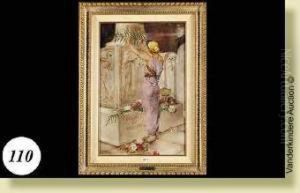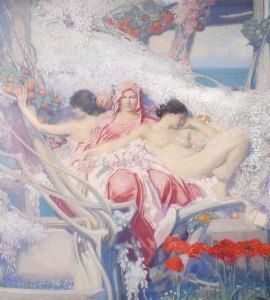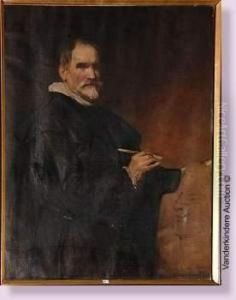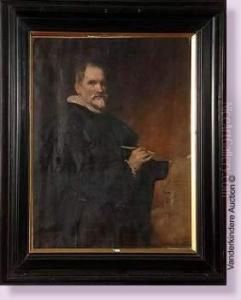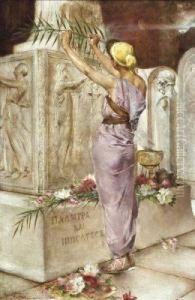Emil Vloors Paintings
Emil Vloors was a notable Belgian artist, born in 1869 in Antwerp, a city renowned for its rich artistic heritage. He grew up in an environment steeped in the traditions of European art, which undoubtedly influenced his future path as a painter and illustrator. Vloors was part of a generation of artists that bridged the 19th and 20th centuries, a period marked by rapid changes in art styles and techniques. Despite the lack of extensive international recognition, his contributions to Belgian art have been acknowledged by art historians and collectors alike.
Vloors' artistic journey began at the Royal Academy of Fine Arts in Antwerp, where he received formal training. This institution has been a pivotal platform for many Belgian artists, offering a classical foundation in the arts. Emil Vloors, however, was not content with sticking strictly to the academic principles he was taught. Over the years, he developed a distinctive style that incorporated elements of realism and impressionism. His works often depicted scenes of everyday life, landscapes, and occasionally, historical or mythological themes, showcasing his versatility as an artist.
Throughout his career, Emil Vloors participated in numerous exhibitions, both nationally and internationally. His paintings and illustrations were well-received, praised for their depth of emotion and mastery of light and shadow. Despite this, Vloors never became a household name like some of his contemporaries. After his death in 1952, his works continued to be appreciated by art aficionados and occasionally appear in exhibitions dedicated to Belgian art of the late 19th and early 20th centuries.
Vloors' legacy is that of a skilled painter who contributed significantly to the Belgian art scene during a time of transition. His works, characterized by their emotional depth and technical proficiency, offer a glimpse into the life and times of a bygone era. While he may not have achieved the fame of some of his peers, Emil Vloors remains an important figure in the understanding of Belgian art's evolution during a critical period in its history.


